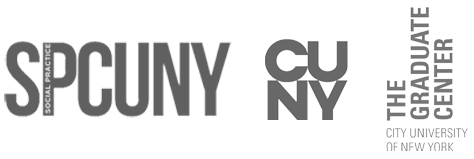Daylighting Tibbetts Brook
My Social Practice CUNY Faculty Fellowship supports the research and production of a photo essay about the daylighting of Tibbetts Brook in the northwest Bronx, where I live. This is a climate mitigation project 20 years in the making that is finally manifesting as a joint venture between several civic groups and city organizations and will incorporate public art, which I mean to document. I have written several similar photo-essays on the intersection of public art and social and environmental justice in frontline communities in New York City. This new essay will be published in spring, 2024 by Broadcast, which is an interdisciplinary online and print magazine on science and the arts, and a joint venture with Pioneer Works.
Since discovering that our house in the Bronx is sited on one of NYC’s many buried streams, I have become interested in the ongoing restorative effort to unbury, or “daylight” Tibbetts Brook, (which the Lenape called Mosholu) as a means of both extending green space and relieving flooding (climate mitigation) in our neighborhood’s overwhelmed drainage system. In April, 2023, I went on a site visit with the Tibbetts Advisory Group, which included folks from the DEP, Parks, Rebuild by Design, and the local community board, for several blocks along the corridor of a former railroad between the Major Deegan Expressway—which turned back into a river after Hurricane Ida—and a string of strip malls and big box stores. Petco. Staples. Cubesmart. Target. Parking lot after parking lot over what was wetlands once. We live on backfill. Some workers were painting over graffiti on the back wall of BJ’s, making a blank canvas for someone to tag it up again tomorrow. As true a metaphor for impermanence as ever there was. We are at an inflection point. A time for reimagining. By 2030 there will be a bike path along the resurrected brook, native plantings, and public art under the overpasses. “Mosholu” means water running over small stones. It means what it sounds like it means. Water remembers where it used to be. I gathered stones in my pockets along the walk, from amidst the trash, and made a ring of them around the little shadblow tree I planted in our backyard in memory of my father. It’s nothing but a twig now. Maybe it will grow. Eventually it will be under water, along with our house. What does it mean to be a good steward? A good ancestor? What ought reparation, resilience, and restoration look like given the scale of the crisis? I do wonder.
During the fellowship year, I will conduct interviews with some of the key players involved in this project from the organizations mentioned above, as well as with members of the local community (my neighbors) about some of their misgivings about the project, including green gentrification. I will also document the graffiti under overpasses that will disappear as a result of the daylighting of the brook, and learn more about the art and artists that will be included in the project. My particular interests lie in the messiness of climate solutions, the costs and the benefits and what’s at stake for local communities, who may or may not be involved, and the layered and hidden history of park land in urban spaces.
Timeline
- In the spring semester of 2024, there will be a literary reading from the Broadcast essay about the daylighting of Tibbetts Brook, and an author conversation with community stakeholders held at Pioneer Works in Red Hook, Brooklyn.
Press
Links
SPCUNY Artist













